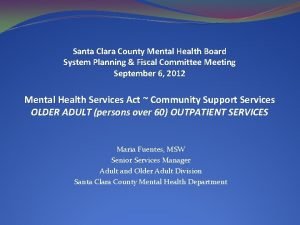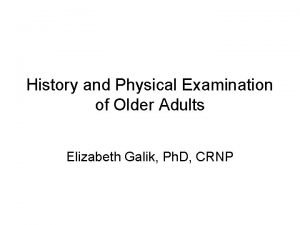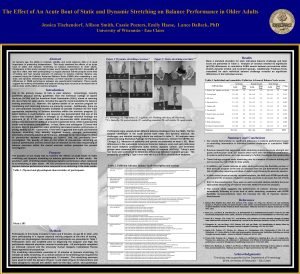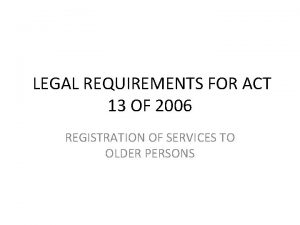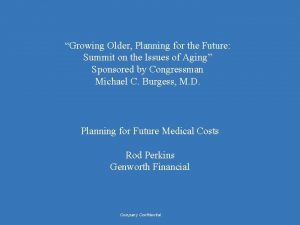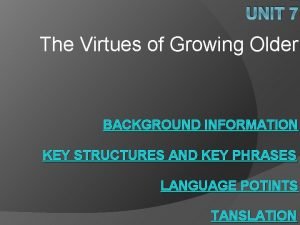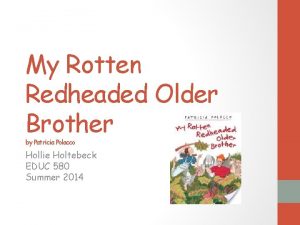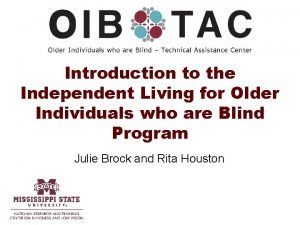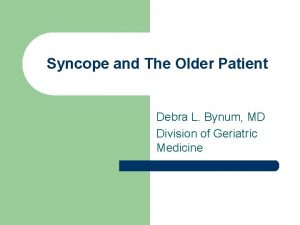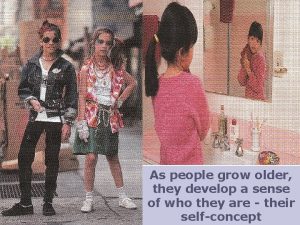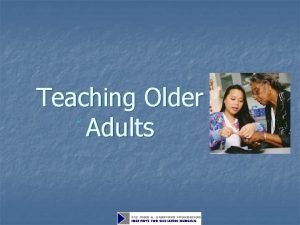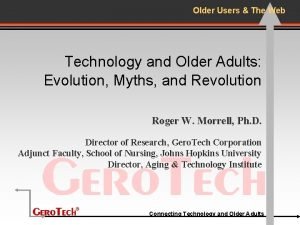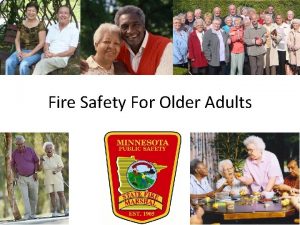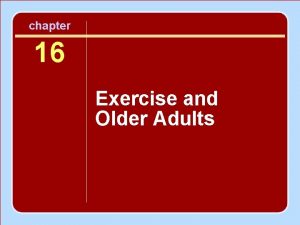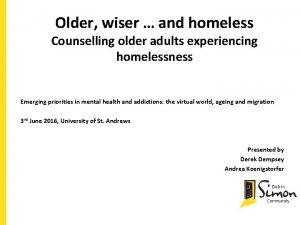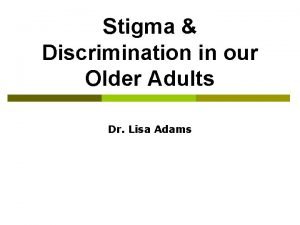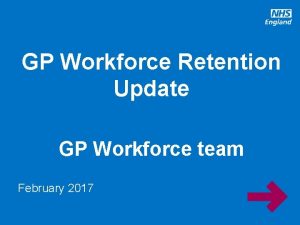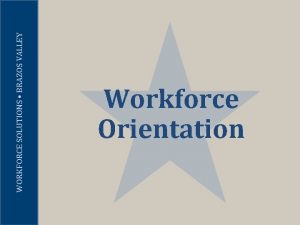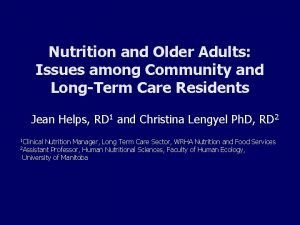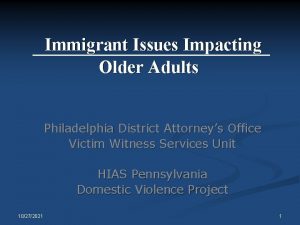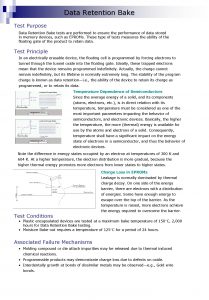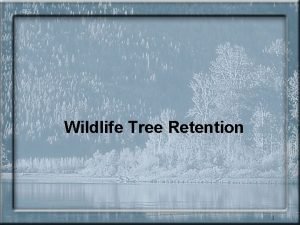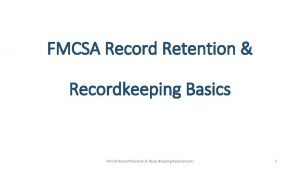Older Adults in the Workforce Retention Issues Lisa































- Slides: 31

Older Adults in the Workforce: Retention Issues Lisa Knapp Wyoming Department of Employment Research & Planning Presented at the 2009 Wyoming Conference on Aging Cheyenne, Wyoming May 21, 2009

Research & Planning: OUR ORGANIZATION: R&P is a separate, exclusively statistical entity. WHAT WE DO: R&P collects, analyzes, and publishes timely and accurate labor market information (LMI) meeting established statistical standards. OUR CUSTOMERS: LMI makes the labor market more efficient by providing the public and the public’s representatives with the basis for informed decision making.

• Baby Boomers, the largest generation of people in the U. S. , are aging – Includes people born between 1946 and 1964 – Approximately 79 million people – The first baby boomers will turn 65 in 2011 – The last baby boomer will turn 65 in 2029

How will this change the workplace? • Demographics of the workforce will change significantly – In 2000 approximately 30% of all people age 55 or older participated in the workforce – By 2015 37% of these people are expected to participate in the workforce • This will mean that nearly 20% of all people in the workforce could be age 55 or older (was 13% in 2001) • This will be more pronounced in some industries such as education and health care

Wyoming’s Aging Population • Wyoming is also aging rapidly • Some counties are aging faster than others


The effect of Migration on an aging Wyoming • Wyoming has a history of young people migrating out of the state – Cohort analysis showed that 56. 6% of young workers in the state in 1993 had left the state by 2003 • Workers from out of state migrate into Wyoming – Evidence suggests that nonresidents are becoming a larger proportion of the state’s population • In 2004, approximately 47. 5% of workers in the state were not Wyoming natives

Sometimes older workers return after leaving the state Wyoming Residents Age 55 and Older Who Exited the Labor Market for At Least One Year and Later Returned to Work Length of Time After Exit Year Final Year 1993 Exiters 2000 Exiters 1 Year 2 Year 3 Year 4 Year 5 Year 6 Year 7 Year 4, 558 956 443 638 405 483 346 333 100. 0% 21. 0% 9. 7% 14. 0% 8. 9% 10. 6% 7. 3% 4, 808 602 616 606 588 556 540 505 100. 0% 12. 5% 12. 8% 12. 6% 12. 2% 11. 6% 11. 2% 10. 5%

• Parts of Wyoming are also becoming retirement destinations – Three counties in Wyoming have been classified as retirement destination counties by the Rural Policy Research Institute • Johnson County • Teton County • Lincoln County – These counties are all known for their natural amenities

Trends in retirement • During the 1990’s, people began retiring at earlier ages than the traditional 65 • Evidence shows that many Baby Boomers do not have enough money saved to retire – Only around 23% of those age 55 or older have savings of $250, 000 or more – More than half (60%) have less than $100, 000 saved for retirement • Current economic downturn means significant loss of retirement savings • Baby Boom generation may have to work past traditional retirement age to afford retirement

• Current economic downturn means an increase in layoffs, even among older workers • According to recent research, the number of Wyoming employees age 65 or older who received unemployment insurance (UI) benefits more than doubled from 200 workers in 1997 to 553 workers in 2007 • The percentage of these workers who exhausted their UI benefits rose from 17. 2% in 2002 to 42. 5% in 2007 – Possibly related to the relative difficulty finding employment faced by older workers compared to younger workers

• The Baby Boom generation is healthier than previous generations and will spend a longer part of their lives in retirement • This generation is also different in how they view retirement – Interest in keeping active, both mentally and physically – More interest in working to supplement retirement income and to keep active – Emphasis on a work situation that also allows them to enjoy retirement activities

• In Wyoming the largest increase in exit rates for in older workers leaving the workforce between 2001 and 2006 occurred in people age 45 -54 (79. 4% change) • Workers age 55 -61 had the second largest percentage change in number of people exiting the workforce at 104. 4% • In 2001 those with an out-of-state social security number were more likely to exit the workforce at an earlier age (45 -54) but between 2001 and 2006 the proportion workers in that age group who originated out-of-state decreased their exit rates slightly (52. 1% to 44. 6%) while those who originated in-state increased their exit rates slightly (40. 4% to 41. 0%)

• Between 2001 and 2006 the largest change in number of exits in the state by industry occurred in agriculture, forestry, fishing, & hunting, and in finance & insurance – The number of workers staying past retirement age increased in educational services and health care & social assistance • Market exit and average home sale price were strongly correlated – Does not mean strong housing prices caused people to leave the workforce,

• Increasing numbers of retirees will also affect businesses – This will result in a significant loss of skills and knowledge • More than 25% of businesses have not planned for ways to deal with an aging workforce • Only around 37% of businesses have created ways of encouraging older workers to delay retiring – There are not as many qualified workers in other generations to replace all of the workers that will retire in the next 20 years • According to the Bureau of Labor Statistics, annual labor force growth rate for people younger than age 55 is projected to be

Where are older workers employed? • Nationally, older workers are more likely to hold white-collar jobs such as professionals and management rather than physically demanding jobs • In Wyoming, older workers are most often found working in industries that typically employee the youngest workers (under 20) or non-residents – This includes retail trade and leisure and hospitality – Older workers are also concentrated in construction, health care, and professional and

Recruiting and Retaining Older Workers • Solutions – Laws – Community Level – Employer Level

• Legal solutions – Several laws have been enacted or changed to make working after typical retirement age easier and more enticing: • April 2000: Eliminated rules involving reducing social security benefits if a worker reaches normal retirement age (65 years and 4 months) and still has earnings – Delayed retirement credit offered to workers who first claim benefits after normal retirement age has steadily increased in recent years and in 2008 was 8% • Age Discrimination in Employment Act of 1967: prohibits age discrimination in employment�

Community Solutions • Make a community more friendly to older workers – Public transportation – Accessible services including medical services and retail services

• Example: Wyoming Nurse Study – In 2007 R&P conducted a survey of nurses in Wyoming • Purpose was to analyze workplace satisfaction and to determine the characteristics of nurses that planned to leave their place of work • Questionnaire was mailed to nurses working in ambulatory care, hospitals, and long-term care facilities – Response rate of 71. 4% for nurses in ambulatory care and 67. 5% for nurses in hospitals and long term care facilities

• Nurses tend to be older than workers in some other occupations – In 2002 the average of a Wyoming nurse was 44. 5 years – By 2010 it is projected that nearly 40% of all nurses will be older than age 50 • Age of nurses is also related to nativity and migration – Study results showed that older nurses were more often not Wyoming natives

• Comments section of the survey allowed nurses to voice their opinions on anything they thought was important – Younger nurses were more likely to comment on wages and management issues – Older nurses were more likely to comment on community issues, commuting issues, and the skill level of new nurses

• One potential issue that could arise due to older nurses (and other older workers) from out of state is that they may decide to leave the state after retirement, decreasing the number of potential retirees who could return to the workplace – Illustrated by comments from the nursing study: • Nurse: “I plan to leave current community after retirement due to high cost of living, high property taxes, isolation from shopping and cultural activities, far distance from large airport. Will settle near where children are in the future” • Nurse: “Am strongly considering leaving this community after my husband retires” • Nurse: “None of our children plan to move back to Wyoming so in 2 -3 years we will look for a place with an airport where we and our children can fly cheaper and where we don’t have to worry about family driving on Wyoming’s winter roads. We will be looking for an area with more diversity”

Workplace changes: • Workplace Safety • Job Flexibility

• Workplace safety is an important issue • The most common injuries for workers age 55 and older, according to the Bureau of Labor Statistics, are: injuries to bones, nerves, or spinal cord, injuries to muscles, tendons, and joints, and open wound – Sometimes, especially in the case of job changing, an older employee is new to an occupation and unaware of related safety issues • Injuries to older workers also result in more time spent away from work


• Older workers desire job flexibility – Older workers often give up higher wages, other benefits, and job prestige after retirement in order to have a job that allows flexibility – Flexibility refers to many things: • Flexible scheduling to allow for other activities outside of work • Flexible workspace that allows the employee to work from home or some satellite office rather than commute • Flexible career paths with multiple points of entry into the workforce

• Example: Wyoming Succession Planning Study, 2008 – State employees are also aging faster than employees in many other industries • In 2008, 25% of employees surveyed were age 55 or older, and some agencies had older employees than others • More than half (54. 1%) of employees surveyed noted they plan to retire in the next 1 -5 years – Questionnaire mailed to employees of the Department of Employment, Department of Workforce Services, and Department of Family Services • Overall response rate of 74. 3%

• State employees are interested in working after retirement, but desire a flexible schedule – More than half of the employees included in this survey said they would be interested in working after retirement • Part-time employment was the most popular response for employees in all age groups and for employees age 55 and older • Almost one-third of employees said they were interested in returning to their old positions as independent contractors after retiring • Nearly one-quarter said they would be interested in working for another state government agency after they retire

Monitoring: • R&P has the ability to monitor demographic changes in the workplace using administrative records – Wage records, Quarterly Census of Employment and Wages, Worker’s Compensation files • Currently monitoring nurse employment at Powell Valley Healthcare and Campbell County Memorial Hospital

Questions?
 Life is older than the trees
Life is older than the trees Mental health and older adults
Mental health and older adults Covids older adults
Covids older adults Altered cognition in older adults is commonly attributed to
Altered cognition in older adults is commonly attributed to Older adults mental health
Older adults mental health Physical examination conclusion
Physical examination conclusion Dynamic stretching for older adults
Dynamic stretching for older adults Mental health and older adults
Mental health and older adults Renal
Renal Sos spelling for older students
Sos spelling for older students Dq98 form
Dq98 form Thunder cake plot diagram
Thunder cake plot diagram Future medical
Future medical The older brother in the prodigal son
The older brother in the prodigal son The wild swans at coole poetic techniques
The wild swans at coole poetic techniques The virtues of growing older
The virtues of growing older Tall old people
Tall old people Patricia polacco brother
Patricia polacco brother Older individuals who are blind program
Older individuals who are blind program Late adulthood intellectual development
Late adulthood intellectual development Older women's cohousing
Older women's cohousing Lesson 2 a letter from an english friend
Lesson 2 a letter from an english friend Nipołomice
Nipołomice Syncope in the older patient is
Syncope in the older patient is Younger cells cuboidal older cells flattened
Younger cells cuboidal older cells flattened Ajayan is ten years older than vijayan
Ajayan is ten years older than vijayan As people grow older
As people grow older Moses older sister
Moses older sister Sos spelling for older students
Sos spelling for older students Downsizing and divesting older business
Downsizing and divesting older business Which is older
Which is older What is parvana's mother's name
What is parvana's mother's name




